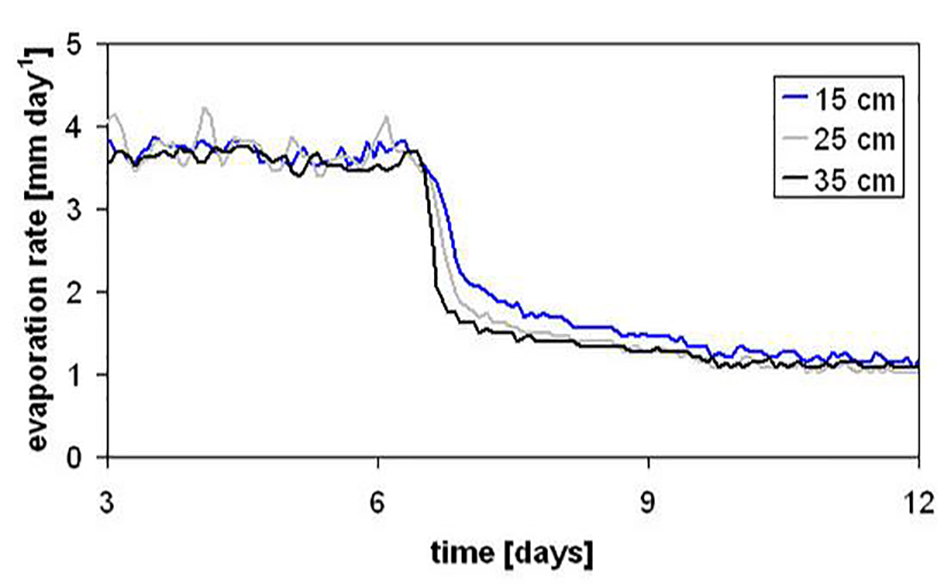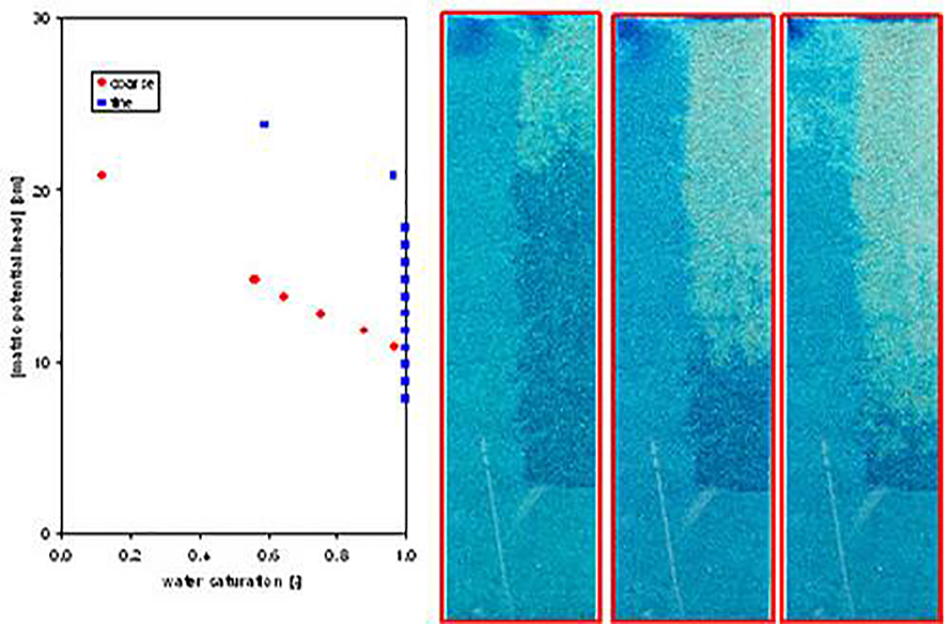Evaporation from porous media
A drying process is the replacement of the liquid by a gaseous phase due to evaporation of the liquid. The drying rate is relevant for the amount of water available for plants and other organisms and the water balance between soil and atmosphere. It is controlled by the humidity and the temperature of the air and the transport properties of the porous media. In this project we analyze the various transport mechanisms using imaging tools, laboratory experiments, numerics and theoretical approaches. The aim of the project is the successful prediction of drying rate for various porous media.
In course of evaporation the curvature radius of the meniscus and the corresponding water pressure are decreasing. As soon as the pressure related radius is smaller than the radius of the capillary, the liquid recedes from the surface. In case of a porous media, not all pores at the surface have the same radius and the meniscus recedes preferentially in the largest pores. The pressure in the receding meniscus is larger (less negative) than the pressure of the small pores at the surface. Due to this hydraulic gradient, water flows from the large pore with the receding meniscus to the small pores at the surface. As long as this mass flow to the liquid surface is sustained, the evaporation rate is high and the slow mechanism of diffusion through the partially dry porous media is circumvented. The mass flow stops if the pressure in the fine pores recedes to the air-entry value of the fine pores. Before the air-entrance in the fine pore, liquid flow paths between the surface and the bottom of the medium exist. The effect of this mass flow due to the variation of the pores sizes can be found in homogeneous and heterogeneous media. For homogeneous porous media, the increase of the air phase into the smallest capillaries corresponds to a significant drop of the evaporation rate.

Fig. 1 Evaporation from coarse sand columns with a diameter of 5.5 cm. After the evaporation of about 60 g, the evaporation rate drops. The boundary between invaded air and completely wet zone (the drying front) is at a depth of about 9 cm.
Similarly, water flows in heterogeneous porous media with vertical interfaces from the large pores in the coarse material to the small pores in the fine material. Due to this mass flow, a totally wet region in the coarse sand coexists with dry coarse sand material. As soon as the pressure at the surface of the water-filled fine pores decreases to the air-entry value of the fine pores

Fig. 2 Evaporation from a heterogeneous sand column with a vertical interface. To show the air-entry values of the two materials, the measured water retention curve is shown in the left figure. At the right side, the distribution of the liquid is visualized with a blue dye. If the distance between the surface and the drying front in the coarse material equals the difference to the air-entry values, air invades the fine material.
Team: Dani Or, Peter Lehmann
Funding: Swiss National Science Fondation
Students: Erfan Haghighi
Contact: